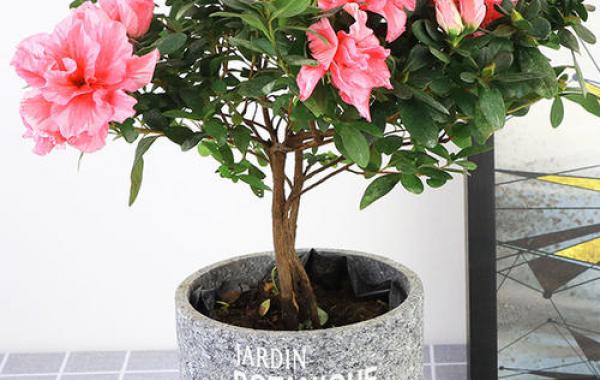How to fertilize flowers? Fertilization Technology of Flowers
Nowadays, more and more friends cultivate all kinds of flowers, and proper fertilization of flowers is also needed in the process of flower cultivation to promote better growth of flowers. The following is an introduction to the fertilization technology of flowers.
Flower fertilization is more complex, the general principles are: fertilization should be a small number of times; inorganic fertilizer can not be spread or contact stem base; organic fertilizer should be re-used by composting; summer high temperature and high humidity weather plant growth should be more appropriate; winter low temperature light weak plant growth should be less appropriate; heavy rain after or plant leaf color yellow green dim fertilizer shortage to timely supplement, etc., the following will introduce the fertilization technology of flowers.
1, flower base fertilizer: large-scale planting flowers or nutrient seedling beds are mostly decomposed organic fertilizer. The application amount of base fertilizer is 1500-3000 jin/mu, if cake fertilizer, bone meal, livestock dry manure and the like are used, the application amount is 100-200 jin/mu, or biological fertilizer is applied at the same time, and the soil is evenly turned into soil during soil preparation, and the planting can be carried out after a few days. Nutrient seedbeds are mostly made of medium with strong adsorption, such as peat, etc., adding appropriate amount of nutrient elements before planting, so that they can be fully adsorbed before planting, and also adding 0.001-1ppm of manganese, iron, zinc, boron, copper and molybdenum trace elements.
2, potted flowers topdressing: potted flowers need to supplement a variety of nutrients at any time due to limited medium capacity in the pot. For the seedlings that have returned to green and new leaves, topdressing should be started, and the amount of topdressing depends on the size of the pot. 40-60 compound fertilizers (imported compound fertilizer) should be applied each time in each pot; for the seedlings that have grown strong, 100-120 grains should be applied each time in each pot, twice a month, and 5-8 times of spraying formula liquid fertilizer should be applied; if heavy rain occurs, topdressing should be applied once. Topdressing should be applied at the periphery of the pot, as far as possible away from the base of the stem, especially not to let the fertilizer fall into the center of the whorled leaves (such as dragon blood trees, pineapples, etc.). If you need to urge flowers, you can add 0.2% potassium dihydrogen phosphate to accelerate flower bud development and health, generally spray once every 3-5 days.
Different types of potted flowers topdressing method:
(1) Bulbous, fleshy flowers topdressing: because bulbous and fleshy stems can store nutrients, and the root system is less, the topdressing amount can be halved according to the normal amount. Because of their high requirements for nitrogen, potassium and calcium, the use of formula liquid fertilizer is often based on potassium nitrate and calcium nitrate.
(2) Fibrous root flower topdressing: This kind of flower is required to be planted in loose medium, such as western rhododendron, ornamental pineapple, etc. Topdressing requires a small number of times, topdressing amount is 1/5-1/4 of the normal amount, that is, 15-30 compound fertilizers per pot can be applied each time.
(3) large leaf type shade leaf flower topdressing: this flower grows rapidly, root system is developed, need fertilizer amount is much, if the evergreen of araceae waits. In addition to the normal amount of topdressing twice a month, 100-120 grains of compound fertilizer are applied each time, and 5-8 times of formula liquid fertilizer are sprayed.
(4) Bonsai topdressing: The characteristics of bonsai fertilization are that the quantity should be small and the fertilizer efficiency should be long. Generally, slow-acting organic fertilizers such as bone meal and cake fertilizer are used as the main body, and slowly released urea formaldehyde, phosphate rock powder and a small amount of fertilizer are added. If there is no ready-made fertilizer for bonsai, it can be treated with olive oil or plastic film coating solution from commercial flower fertilizer, and it can achieve continuous and long-term effect. The fertilizer can be buried under the substrate of pot edge. Large-scale production of bonsai can be used formula liquid fertilizer spraying method, spraying once every 3-5 days, alternate spray salt washing once can be.
Related
- What if the leaves of potted flowers turn yellow?
- Florescence Control of several Flowers
- Anti-freezing technology and post-freezing nursing technology of flowers
- What is the classification of flowers? What are the common methods of flower classification?
- Prevention and control of alkali and acid damage of flowers in courtyard
- Technology of Anti-freezing and restoring growth of Flower seedlings in greenhouse and greenhouse
- How does flower fertilization not hurt the root? Fertilization technology of flowers
- Key points of disinfection in flower greenhouse
- Several pesticides that are banned or used cautiously in flowers
- How to fertilize the flowers that watch the leaves?



